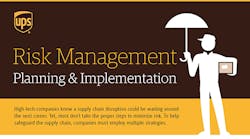Product launches happen all the time – whether they involve a new product or an existing product entering new markets or new channels. The one common thread: No two product launches are exactly alike. That requires logistics professionals to develop a strategy that meets the specific needs of each launch project.
During a launch, many organizations leverage their existing supply chain and the solutions they have in place to serve existing channels. The complex demands of a launch can quickly exceed the ability of this established supply chain to respond well enough to execute a successful launch.
For logistics teams developing a plan for a launch, it is important to get with the sales and marketing side of the business as early as possible and understand their objectives and forecasts. Logistics then needs to make sure the right team is in place to meet the objectives set by the launch strategy. This includes internal resources as well as outside providers and supply chain partners.
By definition, a launch is a time-bound process. Logistics needs to establish communication, collaboration, and visibility with warehouse, transportation, customs brokerage services, and compliance teams.
A large spectrum of solutions may be needed depending on the differing sales and marketing strategies of the product launch: cross-border expertise, highly detailed operating plans, applicable mode-specific security solutions such as geo fencing, and increased control tower milestone monitoring of shipments to ensure customer’s expectations are being met - Just to name a few.
The launch phase is an intensive version of what happens every day in the supply chain. Getting a product on the shelves at 2,000 stores across the United States may mean shifting to a DC bypass tactic like direct-to-store small package delivery to meet the “deliver on” date established by the marketing strategy. A more relaxed “delivery by” date can still mean the current supply chain using bulk shipments to company or reseller/retailer warehouses is not responsive enough. A short-term use of more premium transportation should be evaluated to eliminate DC handling. At the very least, detailed operating plans should be established to give the logistics professionals options when the unplanned occurs.
Contingency planning must be thorough and complete. Demand may not develop as expected, marketing and sales may adjust their forecasts, therefore logistics plans also need to adapt. For example, if the initial manufacturing output from an Asian plant is one million units, the last thing you want is to have too many of those items in Europe where they aren’t selling, sitting on the shelf gathering dust, while demand is spiking in the United States and product is in short supply. When you are in a product launch scenario, there are generally limited initial quantities of the product. To maximize sales, you need to have logistics options that allow you to adjust to demand fluctuations to place the product where the customers are during the launch.
A resilient launch supply chain will have contingency plans for unexpected demand shifts as well as disruptions. It is one thing to do an optimization study balancing capacity, time in transit, and the cost portions of the equation to come up with an optimized solution, but what do you do when things go awry? Make sure your logistics team does thorough contingency planning and you know how to handle exceptions so you are not caught off guard by surprises – or at least you can minimize the impact.
Having the right partners is equally important. This can mean in-country expertise, not only for distribution and transportation, but also Customs compliance and a variety of other regulatory requirements when entering a new geography. It can mean needing a range of technology solutions and operational capabilities for new channels – especially opening an e-commerce channel in a new geography.
As the product introduction matures beyond the launch stage, all of these resources will be vital for regular re-optimization as everything begins to settle into a more conventional supply chain operation. These efforts will help keep business on track until the next product launch.



